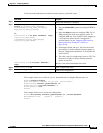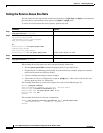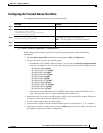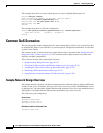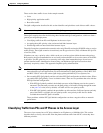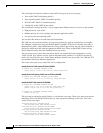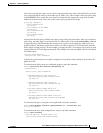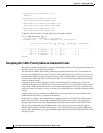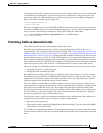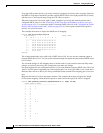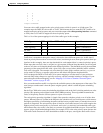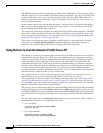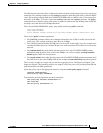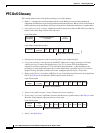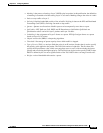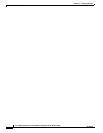
42-123
Cisco 7600 Series Router Cisco IOS Software Configuration Guide, Release 12.2SX
OL-4266-08
Chapter 42 Configuring PFC QoS
PFC QoS Glossary
• Marking is the process of setting a Layer 3 DSCP value in a packet; in this publication, the definition
of marking is extended to include setting Layer 2 CoS values. Marking changes the value of a label.
• Packets carry traffic at Layer 3.
• Policing is limiting bandwidth used by a flow of traffic. Policing is done on the PFC and Distributed
Forwarding Cards (DFCs). Policing can mark or drop traffic.
• Queues—Queues are allocations of buffer space used to temporarily store data on a port.
• QoS labels—PFC QoS uses CoS, DSCP, and IP Precedence as QoS labels. QoS labels are
prioritization values carried in Layer 3 packets and Layer 2 frames.
• Scheduling is the assignment of Layer 2 frames to a queue. PFC QoS assigns frames to a queue
based on Layer 2 CoS values.
• Shaped round robin (SRR) is a dequeuing algorithm.
• Threshold—Percentage of queue capacity above which traffic is dropped.
• Type of Service (ToS) is a one-byte field that exists in an IP version 4 header that is used to specify
the priority value applied to the packet. The ToS field consists of eight bits. The first three bits
specify the IP precedence value, which can range from zero to seven, with zero being the lowest
priority and seven being the highest priority. The ToS field can also be used to specify a DSCP value.
DSCP is defined by the six most significant bits of the ToS. DSCP values can range from 0 to 63.
• Weight—ratio of bandwidth allocated to a queue.



